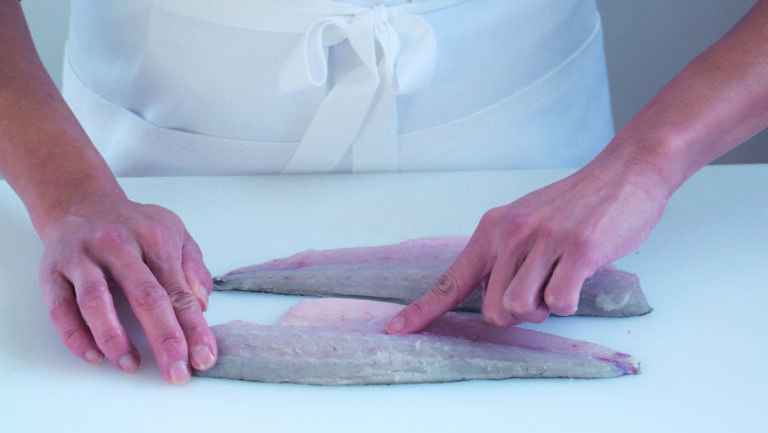Although with practice it is possible to fillet a round fish without removing its innards, gutting it first ensures the fillets are not contaminated by guts, should the knife cut through bones into the guts when filleting.
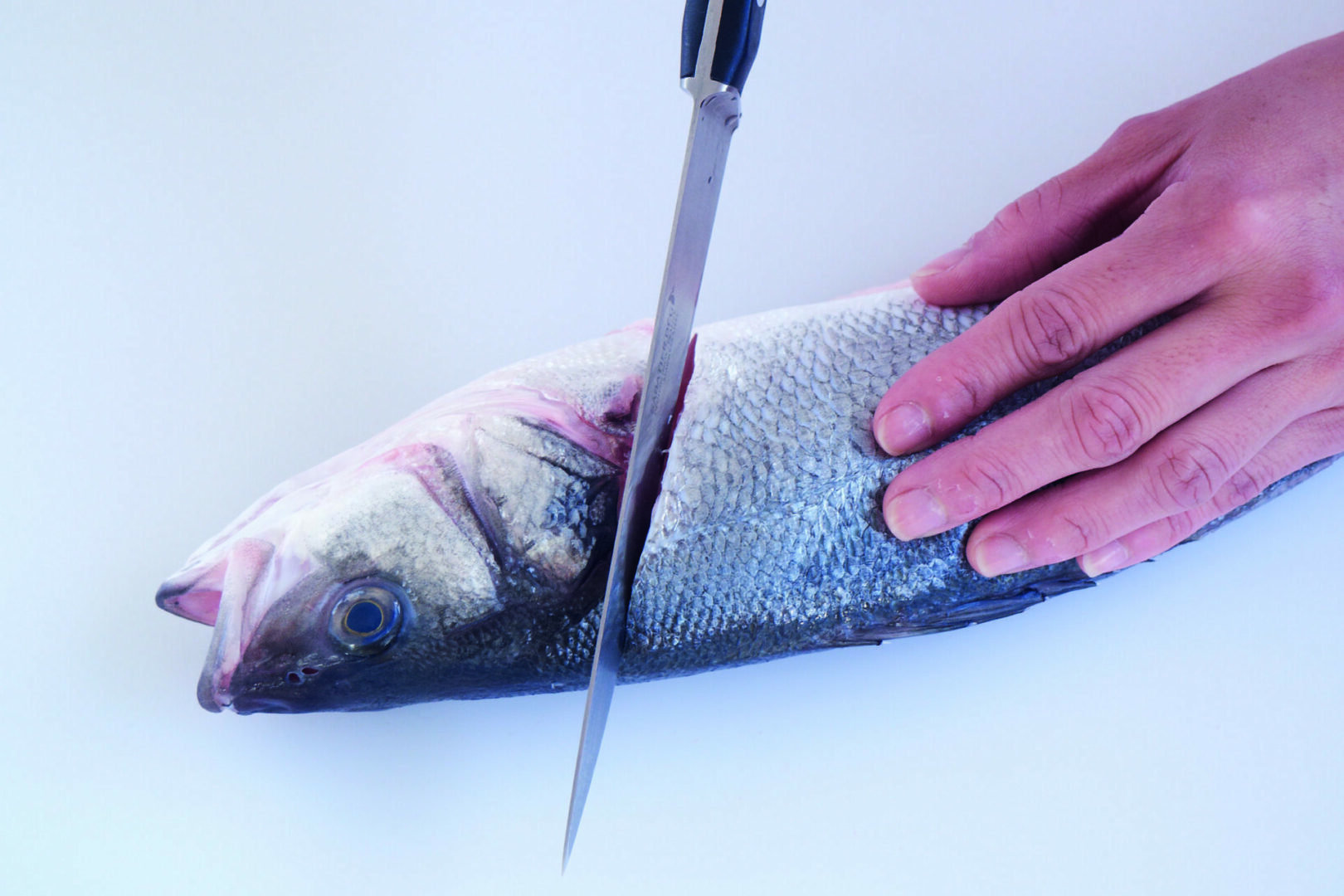
1. Making a cut across the fish at an angle, below the gill flap and fin to the belly.
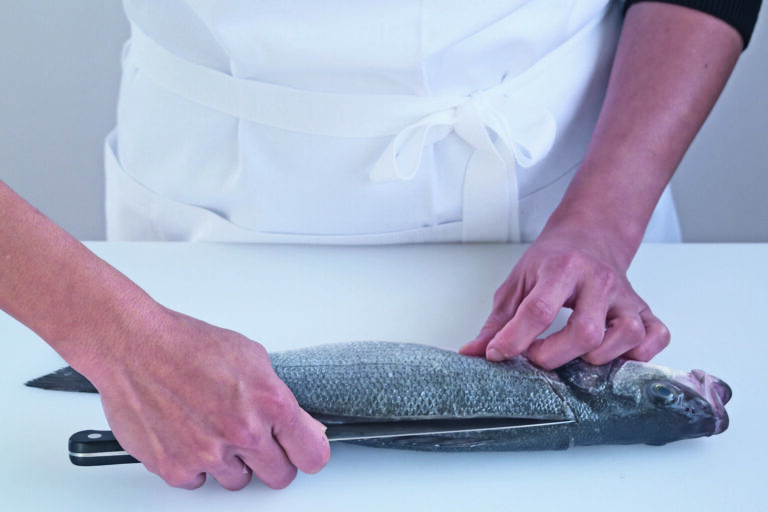
2. Making a shallow cut from behind the head along the top of the dorsal fin to the tail.
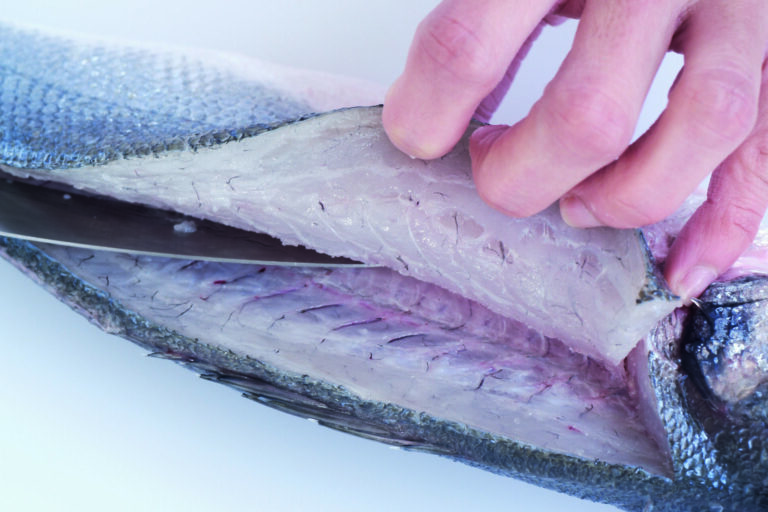
3. Skimming the knife over the bones to free the top fillet.
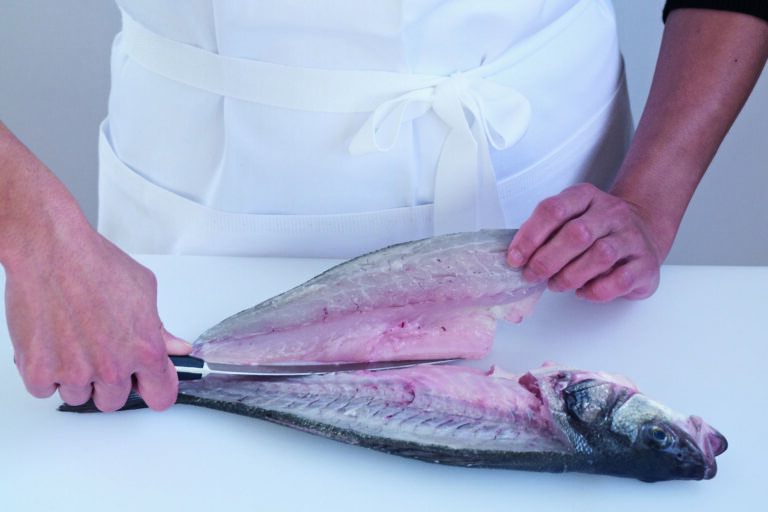
4. Releasing the top fillet from the fish.
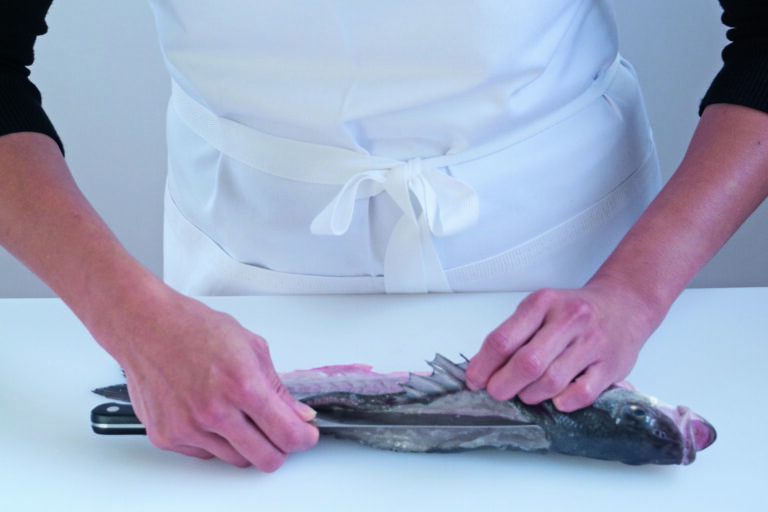
5. Cutting just beneath the dorsal fin from head to tail to free the second fillet.
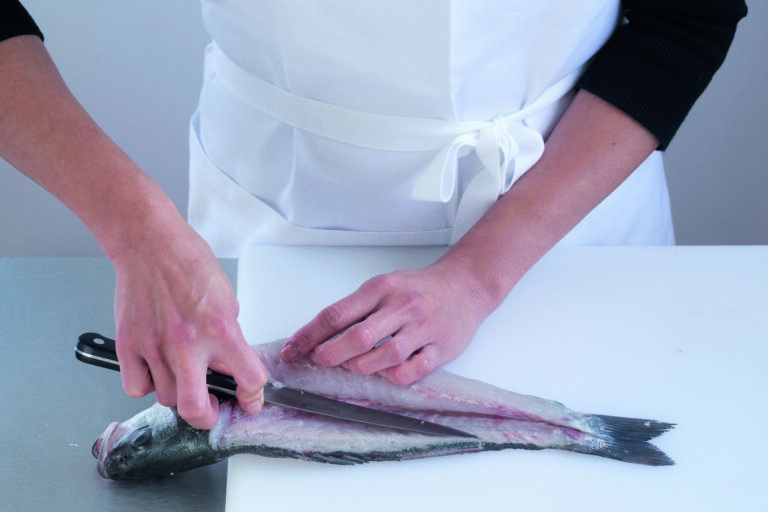
6. With the fish turned onto the other side, releasing the second fillet.

7. Trimming the belly side of the fillet to remove excess fatty skin.

8. Running the tip of a finger along the middle of a fillet to locate the bones there.
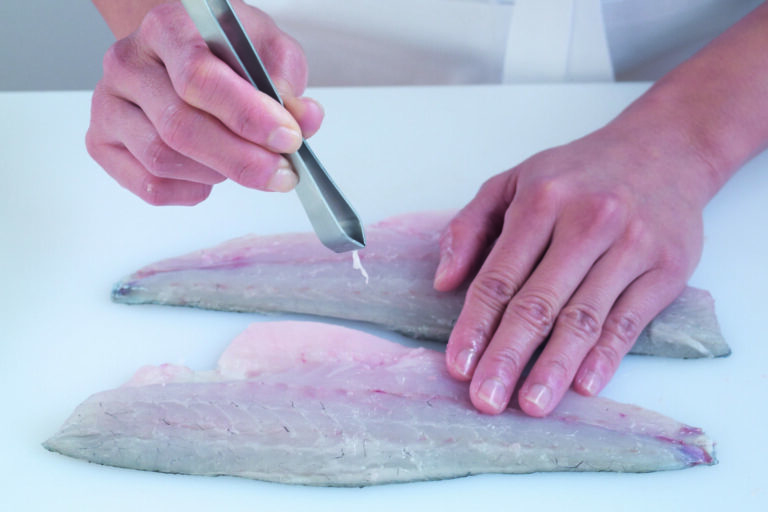
9. Carefully pin-boning the fish fillets using kitchen tweezers.
Instructions
- Descale and gut the fish. Make a cut across the fish at an angle, below the gill flap and fin to the belly.
- Keeping one hand pressing down firmly on the side of the fish, make a cut from behind the head along the top of the fish down its back, on top of the dorsal fin, to the tail. Use the whole back of the knife to do this, not just the point.
- Using long strokes of the knife, release the top fillet, making sure the knife blade runs horizontally as closely as possible along the bones. Try to ensure that no fish is left on the bone. Take care coming to and over the back bone; make sure you are on top of the bone rather than under it. Also take care over the belly bones that they are not cut through or fish left on the bone.
- Once you are over the belly bones, the fillet will come away cleanly. Put the fillet to one side while you work on the second fillet.
- The second fillet is a little trickier to remove. Start with the exposed bone uppermost, and again make a cut from just behind the head parallel to the cut made for the first fillet, but this time work your knife just beneath the dorsal fin, cleanly cutting along the backbone from head to tail.
- Now turn the fish over and, if you are able to, hang the fish’s head over the side of the board to allow the main body of the fish to be flat against the board. Proceed as for the first fillet. Once the second fillet has been removed the frame can be discarded, or if it is a white fish, you can remove the head, rinse the frame and keep it for stock.
- Place the fish fillets on a plate while you wash and dry the board. Put the fillets back on the board. Trim any excess fatty skin from the belly side, but keep the fillets as natural a shape as possible.
- Run the tip of your finger along the middle of the fillet and you will feel the bones running close through the thickest part of the fillet. It is imperative that these are removed before further preparation or cooking.
- Using a pair of kitchen tweezers, carefully pick out each bone, supporting the fillet as you do, to ensure only the bone and not fish is removed. Repeat with the remaining fillets. The fillets are now ready either for skinning or for cooking.
